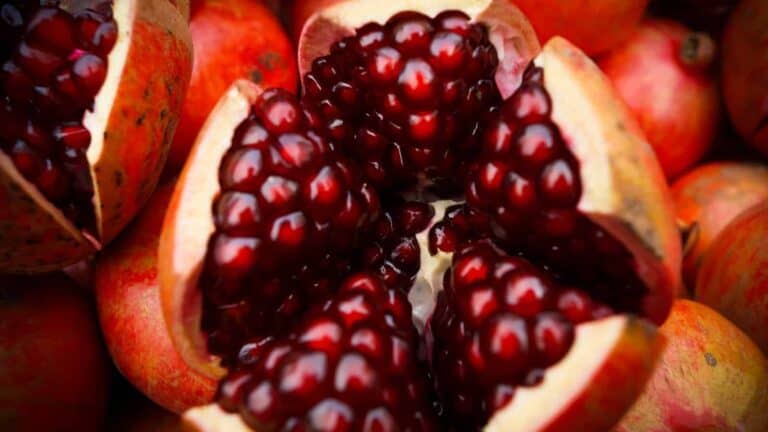Have you ever wondered how much food you should be eating? Or maybe you’re curious about what an appropriate portion size looks like. Understanding portion sizes is an important aspect of maintaining a healthy diet and achieving a healthy weight. In this ultimate guide to understanding portion sizes, we’ll explore what portion sizes are, why they’re important, and how to control them.
What is Portion Size?
Portion size refers to how much food you eat at one sitting. A serving size is a specific amount of food that is recommended to meet your nutritional needs. Serving sizes are usually listed on food packaging and are based on the dietary guidelines for Americans. However, many people consume more food than the recommended serving sizes.
It’s important to note that portion sizes are not the same as serving sizes. Portion sizes are about the size of the food you eat, while serving sizes are a measurement of the amount of food you should eat. Understanding the difference between these two terms is crucial in controlling your portions and maintaining a healthy diet.
The Importance of Portion Control
Proper portion control is important for maintaining a healthy weight and reducing the risk of developing medical conditions such as heart disease and diabetes. Eating larger portions of calorie-dense foods can lead to weight gain and other health problems. On the other hand, eating smaller portions of nutrient-dense foods can help you feel full while consuming fewer calories.
How to Measure Portion Sizes
There are several ways to measure portion sizes. One of the easiest ways is to use measuring cups and spoons. Measuring cups can be used to measure dry ingredients, while measuring spoons can be used to measure liquids and small amounts of dry ingredients.
Another method for measuring portion sizes is to estimate them using your hands or other objects. For example, one serving of cooked pasta is about the size of a baseball. One serving of meat or poultry is about the size of a deck of cards.
Reading food labels of packaged foods is also an important way to measure portion sizes. The nutrition facts label on food packaging provides information about serving sizes and the number of calories and other nutrients in a serving.
Tips for Controlling Portion Sizes
Controlling portion sizes is an important aspect of eating healthy. Here are some tips for controlling your portion sizes:
- Use smaller plates and bowls: Using smaller dishes can help you eat smaller portions.
- Practice mindful eating: Pay attention to your hunger and fullness cues while eating, and avoid distractions such as television or your phone.
- Avoid calorie-dense foods: Choose nutrient-dense foods instead of calorie-dense foods, which can help you feel full while consuming fewer calories.
- Plan meals ahead of time: Planning meals ahead of time can help you control portion sizes and make healthier choices.
Observing a healthy eating pattern is important for overall health and wellbeing. Understanding portion sizes is an important part of creating a healthy eating plan, and this ultimate guide to understanding portion sizes provides the information you need to make informed decisions about how much food to eat.
Portion Control and Eating Out
Controlling portion sizes while eating out can be a challenge. Restaurants often serve larger portions than what is recommended. Here are some strategies for controlling portion sizes while eating out:
- Look for healthier options: Choose dishes that are lower in calories and higher in nutrients, such as whole grains and vegetables.
- Share a main dish: Share a main dish with a friend or family member to control your portion size.
- Ask for a to-go box: Ask your server to bring a to-go box with your meal so you can take home any leftovers.
Portion Control and Snacking
Snacking can be a healthy way to keep your energy levels up throughout the day, but it’s important to control your portion sizes. Here are some tips for controlling your portion sizes while snacking:
- Choose healthy snack options: Choose nutrient-dense foods such as fruits, vegetables, and whole grains.
- Avoid calorie-dense snacks: Avoid snacks that are high in calories and low in nutrients, such as chips and candy.
- Portion out snacks ahead of time: Pre-portion snacks into smaller containers or bags to control the amount you eat.
- Keep snacks out of sight: Keep snacks out of sight to avoid mindlessly eating them.
Final Thoughts: The Ultimate Guide to Understanding Portion Size
Portion sizes are an important aspect of maintaining a healthy diet and achieving a healthy weight. Understanding the difference between portion sizes and serving sizes, and how to control them, can help you make healthier choices and consume fewer calories. Having proper portions can also help you feel fuller while consuming fewer calories, reducing your risk of obesity and other chronic diseases. Finally, portion control is important when eating out or snacking, as restaurants often serve large portions and high-calorie snacks. With the right strategies, it’s possible to control your portion sizes and achieve a healthy diet.
By measuring your portions, using smaller plates and bowls, and choosing nutrient-dense foods, you can control your portion sizes and maintain a healthy diet. Remember, small changes can make a big difference in achieving your nutritional needs and weight loss goals.




